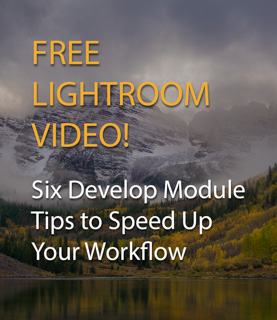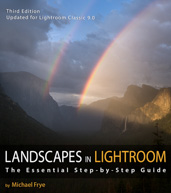In the Moment:
Michael Frye's Landscape Photography Blog
by Michael Frye | Jun 15, 2012 | Digital Darkroom
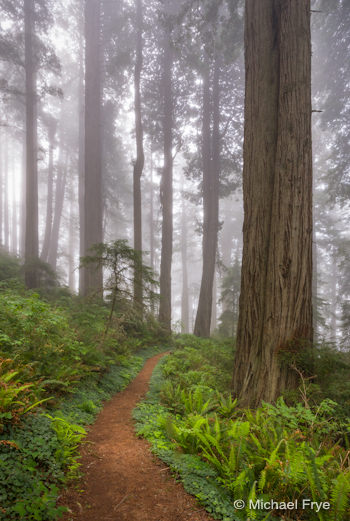
Path through foggy redwoods
I meant to post this earlier, but if you haven’t heard, Lightroom 4.1 was officially released about two weeks ago. So if you’ve been waiting to upgrade to Lightroom 4 until Adobe fixed the bugs, I think your wait is over, as the major problems should have been addressed. I know the point curve bug was fixed with the 4.1 RC (“release candidate”), so that shouldn’t be an issue any more.
Lightroom 4 is a big step forward in Raw image processing, but the advancements require a lot of horsepower to work properly. So check the system requirements before you take the plunge. Many people have had to upgrade their operating system to run Lightroom 4, and upgrading your OS can be a big undertaking, requiring that you update other applications as well.
Earlier I posted two videos about Lightroom 4, so if you haven’t watched those yet they can help you get up to speed in the new process. Here are links to Part 1 and Part 2.
The first image here, as well as all of the images from Monday’s post—including some pretty high-contrast scenes—were processed exclusively in Lightroom 4. In the comments for that last post JayM asked if I could make a tutorial on how I processed the first image. That’s a great suggestion, but for now you’ll find a screen shot below that shows the Basic Panel settings for that photograph. (I didn’t use the Tone Curve, which is not unusual for me these days with high-contrast images in Lightroom 4.)
(more…)
by Michael Frye | Jun 11, 2012 | Light and Weather
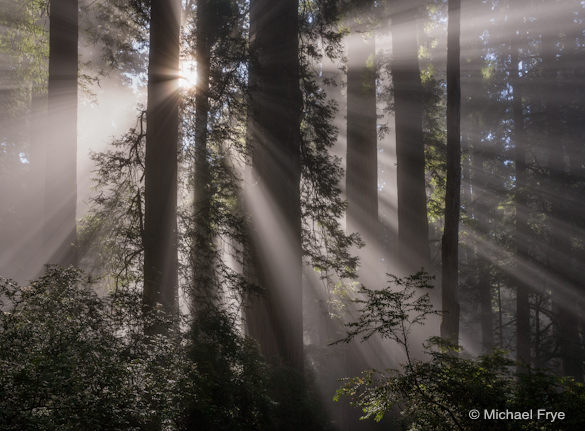
Sunbeams in the redwood forest
Last year I spent a magical day among foggy redwoods and rhododendrons along the northern California coast, and captured some of my favorite redwood photographs to date. You can see some of those photos here and here.
Claudia and I recently returned from another trip to the redwoods. On our first morning we went to the same area we visited last year, but the fog wasn’t as extensive, and not as many rhododendrons were blooming. We kept hiking, and finally reached some mist, and then something magical happened: the fog began to lift, and sunbeams started filtering through the trees. I captured the “Close Encounters” photograph below, then huffed up a steep trail to the top of a ridge and made the image at the top of this post, with classic godbeams radiating through the trees, then hurried back down, chasing the receding edge of the fog, where I found the scene in the second photograph below.
(more…)
by Michael Frye | Oct 24, 2011 | Announcements
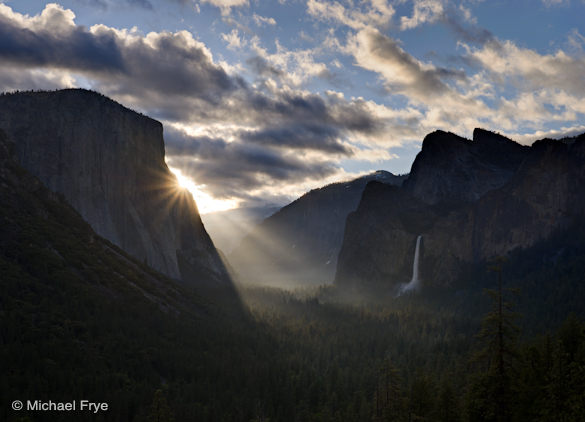
Sunbeams From Tunnel View, Spring, Yosemite National Park, California
For the first time ever, The Ansel Adams Gallery is sponsoring a special print sale of two of my images at 25% off the normal price. These are two recent photographs that have never been printed before, and both are available in two sizes: 16×20 and 20×24. My signed, limited-edition 16×20 prints usually sell for $325, but during this sale you can get one for only $244! Or you can purchase a 20×24 print, normally $475, for only $356! The sale lasts for just six days, until Sunday, October 30th, at 6:00 p.m. Pacific time. Visit the Ansel Adams Gallery web site to purchase or get more details.
(more…)
by Michael Frye | Jul 12, 2011 | Composition, Photography Tips, Vision and Creativity

Redwoods and rhododendrons—telephoto view
A Tale of Two Photographs
Reading David duChemin’s eBook A Deeper Frame got me thinking about how we perceive depth and space in photographs, and how lens choice affects that perception.
David says that because photography turns “a world of three dimensions into two,” that “if we aim to create photographs that create within the reader a deeper, fuller, longer experience, it falls to us to recreate that depth.”
There’s no question that wide-angle lenses are better tools for creating a sense of depth in a photograph than telephoto lenses. Telephotos make objects appear closer together than they really are, compressing space and flattening the perspective. Wide-angle lenses make objects appear farther apart than they really are, expanding the sense of space, and, if used correctly, creating an illusion of depth.
These two photographs from my recent trip to the redwoods illustrate the difference. Both images include the same rhododendrons and redwoods.
In the top image I stepped back with a telephoto lens (130mm) and isolated part of the bush against two redwood trunks. It looks like the rhododendrons are only a few feet in front of the trees, but they’re not. They’re at least 20 feet away—illustrating the compression effect of the telephoto lens. The sense of depth is minimal.
(more…)
by Michael Frye | Jun 30, 2011 | Photography Tips, Vision and Creativity
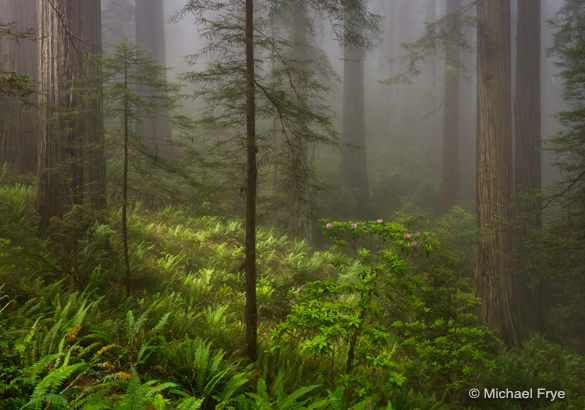
Redwoods, ferns, and rhododendrons near the northern California coast
Last week my wife Claudia and I visited our son Kevin in Arcata, California (he goes to Humboldt State University there). Arcata is just north of Eureka, along the northern coast of California, in redwood country.
Eleven years ago we’d camped in this area, and hiked a beautiful trail through the redwoods (nine-year-old Kevin complaining the whole way, especially on the steep climb back). The next morning I returned alone with my camera, found the forest enveloped in dense fog, and made one of my favorite photos ever.
I’d never gone back to that spot, but forecasters predicted patchy fog for last Wednesday morning, and it seemed like a good time to go. So we rose early and drove through fog, then sun, and back into fog. As we neared the trailhead I caught a glimpse of a roadside redwood grove that took my breath away. In the fog it was just so beautiful, so… primeval. I felt I’d traveled back in time a million years.
(more…)






